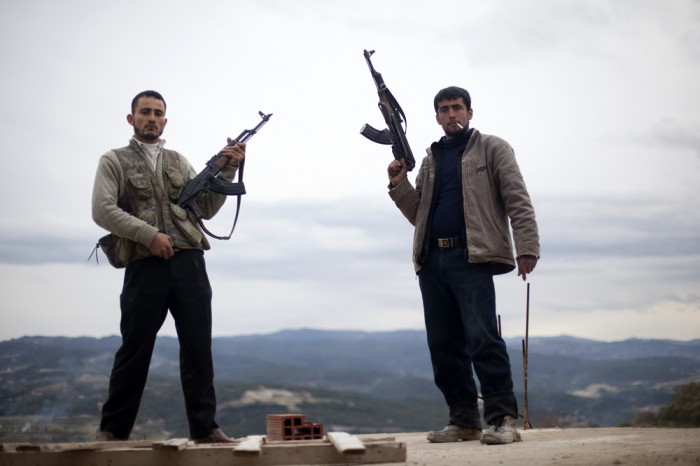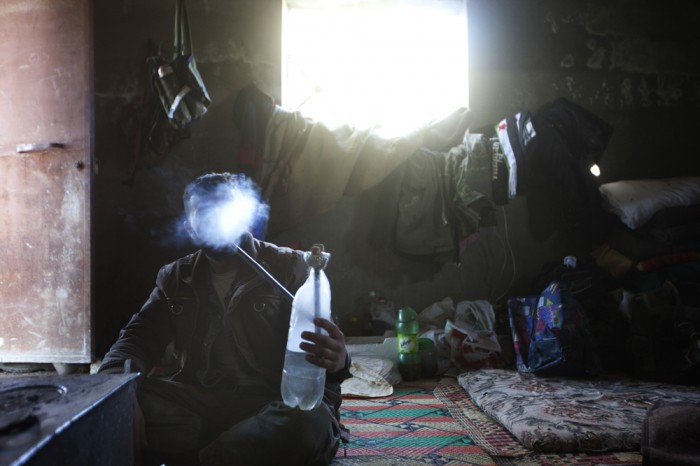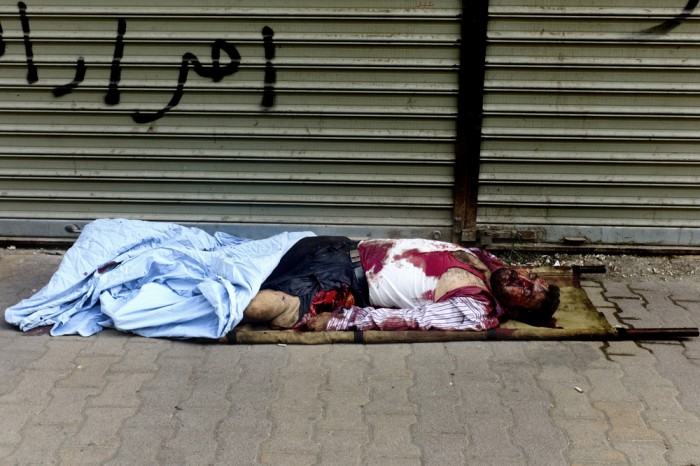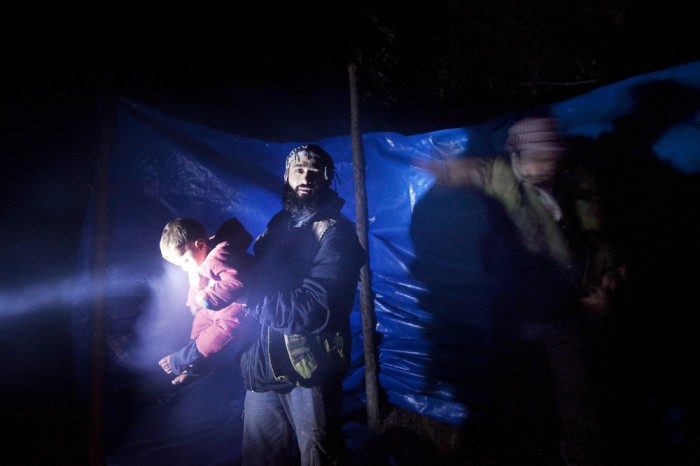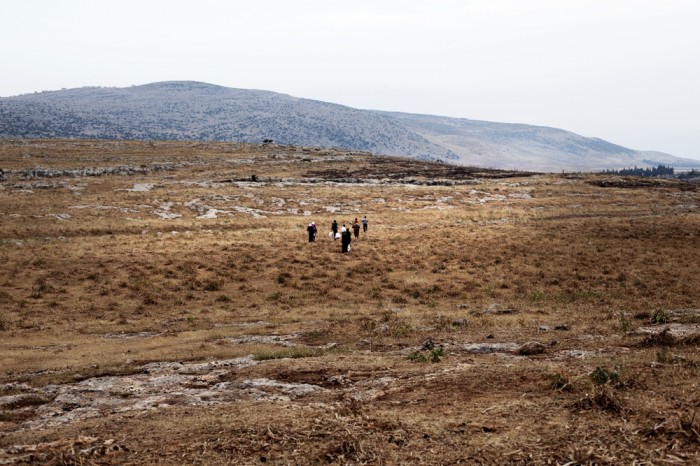Syria's Free Army
I arrived in Antakya, Turkey, and from there crossed into Syria. Things were calm in that particular area, and, in three different villages, we photographed the antigovernment protests that took place every evening. We also visited Taftanaz, where we saw dozens of torched houses and many desperate people who, they told us, were waiting for the next attack by the government’s army. On May 19, around 4:30 in the morning, our host woke us and told us that we had to evacuate the village; he believed that government forces would attack in a matter of hours. We drove in his car to the border. There we saw about 50 refugees—women and children mostly—who were trying to reach the border. We walked along with them and reached some Turkish soldiers. They had already opened a big hole in the border fence in order to let in the refugees. In the distance we could hear loud explosions, and we saw a helicopter flying over the area we had just abandoned. After four hours of waiting, all the refugees had crossed onto Turkish soil. It was finally our turn. After a while, at a police station in Turkey, we were photographed and fingerprinted, and then we left for Antakya. There the police informed us that we had to leave the country within the next 24 hours. Later, back in my native Greece, I found out that our Syrian hosts were safe. What moved me about these people is that, realizing the imminent danger, they took us to the border. But they didn’t follow us. They went back to defend their village.
